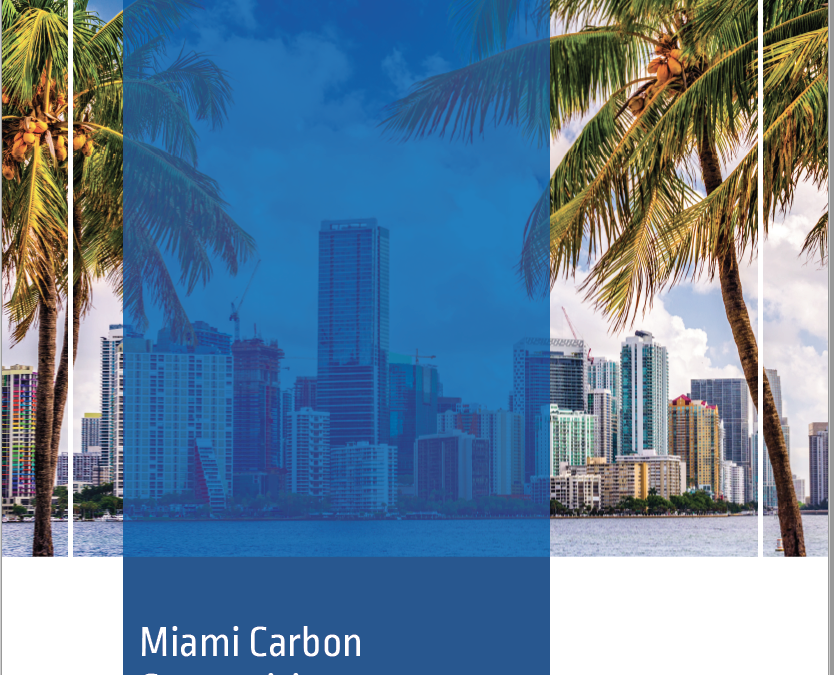Overview
This report analyzes three questions to assess how the sources of electric power in the Miami area may affect the city’s competitive position for attracting new businesses:
- Are Fortune 500 companies increasingly prioritizing climate and clean energy factors into their economic development decisions?
- How do the climate and renewable electricity plans of the Miami-area grid compare to the plans of power providers for six similarly sized cities with whom Miami competes for new businesses (competitor cities)?
- To what extent will the electricity generation plans for the Miami-area make it less attractive as companies consider expanding, relocating, or siting new facilities?
Findings
- Fewer Greenhouse Gas Reductions – The Miami-area grid is completely powered by FPL. FPL’s GHG reduction target, and by extension the Miami-area grid’s carbon reduction target, is weaker than its competitors for two reasons. First, FPL’s GHG reduction target is an “intensity” target, measuring how much GHG it emits per unit of electricity produced. If electricity use were to increase due, for example, to the electrification of the transportation and buildings sectors, the total GHG emissions of the Miami-area grid could increase. By contrast, all six of the utilities that serve the Miami area’s competitor cities— Atlanta, Austin, Charlotte, Orlando, Raleigh, and Tampa—use absolute GHG reduction targets. This means that their emissions cannot increase above that level, even if electricity use were to increase. Second, FPL has made no commitment to decrease its emissions beyond 2025. By contrast, all six utilities that serve the Miami area’s competitor cities— Atlanta, Austin, Charlotte, Orlando, Raleigh and Tampa—have committed to emissions reductions targets out to 2050 or to achieve zero emissions before 2050. Chart 1 shows the percentage of expected carbon reductions from each cities’ primary electric service provider from their 2005 baseline out to 2050 based on their GHG reduction commitment.
- Less Carbon Free Energy – The Miami-area grid is expected to achieve 19% growth in carbon free electricity by 2030 as outlined in FPL’s ten-year plan. However, this percentage is below five of the six competitor cities—Atlanta, Austin, Charlotte, Orlando, and Raleigh—based on each utility’s current planned carbon free generation capacity additions. Chart 2 shows the percentage of planned carbon free generation capacity for each utility based on their IRP’s or corporate reports. The Miami-area grid baseline produces 10% less carbon free electricity for each city except Tampa and Orlando, and the Miami-area grid will only lead Tampa in carbon free electricity come 2025, with Orlando surpassing the Miami-area shortly thereafter.
Download the full report by filling out the form below.
